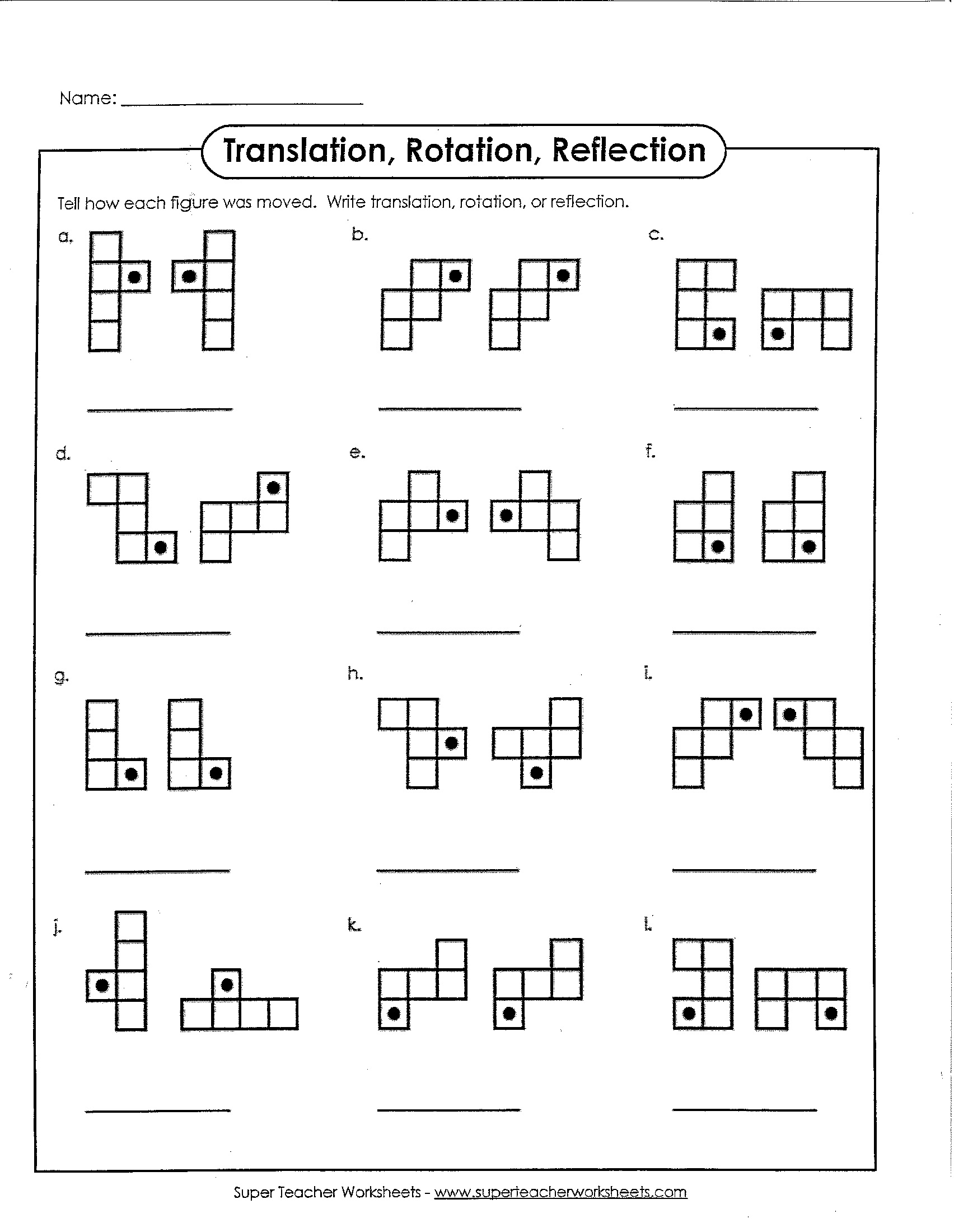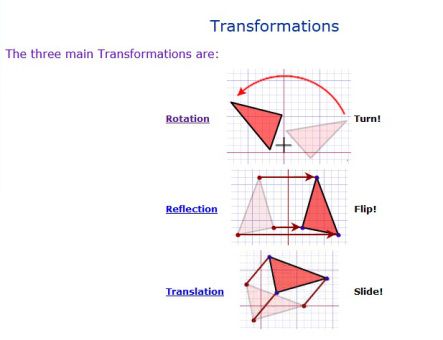

There are three ways we describe a translation:Īs seen in the example below, we will learn how to take a preimage (triangle ABC) and translate it using vectors to find its image (triangle A’B’C’). Transformations Translations, Reflections, and Rotations (also known as Slides, Flips, and Turns) Mel Balser EME 4401 NovemSunshine State Standards and National Educational Technology Standards MA.C.2.2. Which means we need direction (up, down, left, or right) and magnitude (length of units).

We use vectors to represent a translation. So how do we represent translations mathematically?

Translations are often referred to as slides. A translation is a type of transformation that moves each point in a figure the same distance in the same direction. The rigid transformations are reflection, rotation, and translation. A rigid transformation does not change the size or shape of the preimage when producing the image. This means that a translation is an isometric transformation which means that the preimage and image are congruent figures, as ck-12 accurately states. In geometry, a transformation is an operation that moves, flips, or changes a shape to create a new shape. The blue octagon is a translation, while the pink octagon has rotated. That’s all there is to translations… slide an object, without changing its shape, to a new location. Hence the shape, size, and orientation remain the same. Without changing the shape of your hand, you slide your hand along the surface to a new location. Translation happens when we move the image without changing anything in it. In other words, imagine you put your right hand down on a flat surface. Now that may sound confusing at first, but that’s why we’re going to take this step-by-step in today’s geometry lesson.Ī translation is sometimes referred to as a slide, shift, or glide as it maps (moves) all points of a figure the same distance and in the same direction. Well, mathematically speaking, they’re the critical ingredients for isometric movements within a rigid body. A translation can also be interpreted as the addition of a constant vector to every point, or as shifting the origin of the coordinate system. Jenn, Founder Calcworkshop ®, 15+ Years Experience (Licensed & Certified Teacher) In Euclidean geometry, a translation is a geometric transformation that moves every point of a figure, shape or space by the same distance in a given direction.


 0 kommentar(er)
0 kommentar(er)
